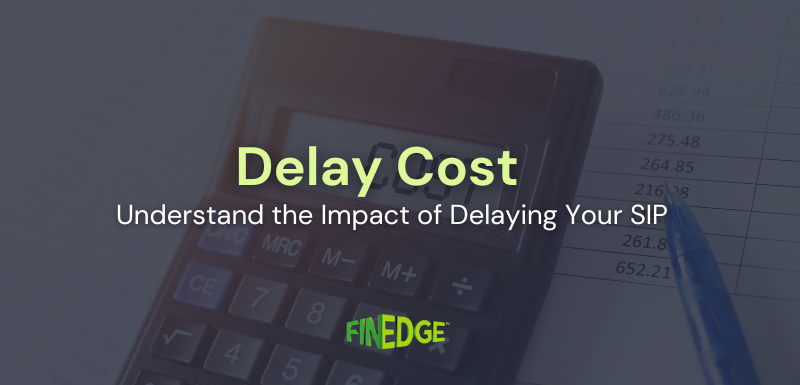Common SIP Mistakes Investors Should Avoid for Long-Term Success
- Learn the most common SIP investing mistakes investors make.
- Understand why goal alignment and discipline matter.
- Discover expert-backed ways to improve your SIP journey.
Systematic Investment Plans (SIPs) have become a go-to strategy for long-term investing, especially for Indian investors. But while SIPs are simple to start, avoiding common mistakes is crucial for achieving meaningful outcomes. From skipping instalments to choosing the wrong options, this blog walks you through the key SIP mistakes to avoid, and how to make the most of your investments.
Why Every SIP Should Be Linked to a Financial Goal
A mistake many investors make is starting SIPs without mapping them to specific financial goals. Every SIP should serve a clear purpose, be it retirement, your child’s education, or a home down payment. When your SIPs are goal-based, you stay focused, motivated, and are less likely to stop midway.
Why You Shouldn’t Wait for the Right Time to Start SIPs
Waiting for the perfect market level or special date often delays your financial journey. There’s no ‘perfect time’, starting early is far more effective than timing the market. SIPs are designed to work through market cycles. Begin with what you have, and let consistency do the magic.
What Happens When You Skip or Pause SIPs Frequently
Skipping SIP instalments could slow down your progress. Over time, even a few missed SIPs can cause a shortfall in achieving your goals. If required, use the SIP pause feature strategically, but don't make it a habit. Also ensure your bank account has a buffer to prevent rejections.
Why Following Unverified SIP Tips Can Be Risky
Many first-time investors fall for SIP advice from non-experts—social media influencers or friends without financial training. This can lead to misaligned expectations and poor fund choices. Work with an investing expert who understands your goals and risk profile.
How Step-Up SIPs Can Help You Reach Goals Faster
Step-up SIPs let you increase your SIP contribution annually. If your salary increases each year, why not increase your investments too? It’s a smart way to reach goals faster, especially if your starting amount is lower than ideal.
Should You Pause or Redeem SIPs Before Major Events?
Markets react to events like elections, budgets, or geopolitical tensions. But historically, they bounce back. Don’t pause or redeem SIPs in anticipation of such events. These dips often allow you to accumulate more units at lower prices—a win for long-term investors.
Which SIP Option Should You Choose: Growth or IDCW?
Choosing the IDCW (Income Distribution cum Capital Withdrawal) option can reduce the compounding effect. The growth option reinvests gains, allowing wealth to build over time. Unless you need regular income, the growth option is ideal for long-term investing.
Why You Must Review Your SIP Portfolio Regularly
Review your SIPs every 6–12 months. Are they performing as expected? Are they aligned to your goals and risk appetite? Review also helps you rebalance your portfolio if certain asset classes—like small caps—have grown disproportionately.
Why Short Tenures Don’t Work for SIP Investing
A short SIP tenure of 3–5 years may not be enough for meaningful equity returns. Choose your SIP duration based on your actual goal timeline. For long-term goals, perpetual SIPs (with no end date) ensure you don’t stop investing prematurely.
FAQs
Your Investing Experts
Continue Reading
Cost of Delay in Investment: Why Starting Early Matters
Many investors assume that postponing their SIP temporarily has a minor impact. In reality, the true loss comes from the compounding opportunity that disappears with every missed month. A consistent approach is far more powerful than trying to compensate later by investing larger amounts.
How to Cancel Your SIP Online: A Step-by-Step Guide
Stopping a Systematic Investment Plan (SIP) is simple but following the right steps ensures your cancellation request is processed smoothly without delays.
How to Build a ₹1 Crore Portfolio: A Practical Guide for Indian Investors
Reaching ₹1 crore isn’t about luck or timing, it’s about discipline, consistency, and the patience to let compounding work in your favor.


.png)
